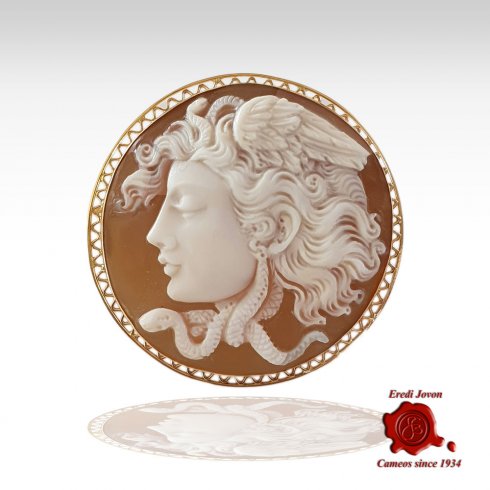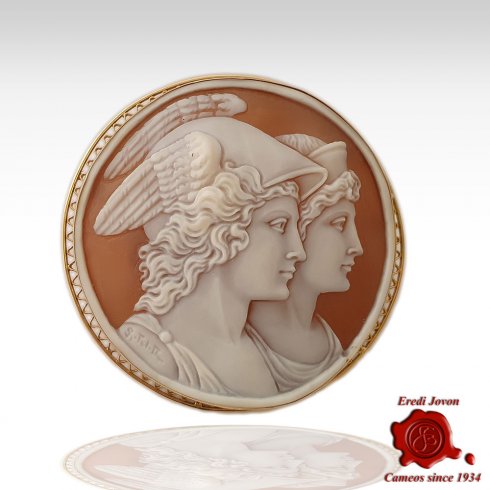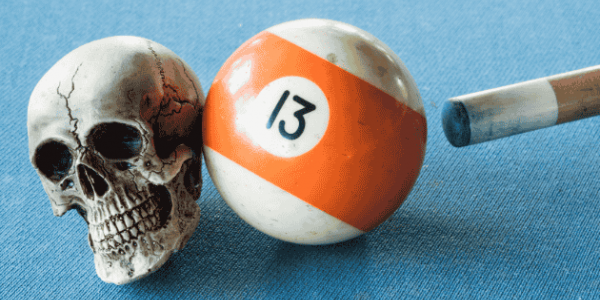The influence of Pompeii's Frescoes and mosaics on Engraved cameo

Neoclassicism and Cameo Art
"Many disasters have befallen the world, but few have brought more joy to humanity."
(Johann Wolfgang von Goethe, "Italian Journey", 1787)
What do engraved cameos and the re-discovery of Pompeii have in common?
In addition to the ever-present and ubiquitous phallus, an apotropaic symbol par excellence that, as we have seen in this other blog article, discusses the origins of the Italian cornetto, today I will introduce you to other sources of classical inspiration that you can still find in Italian jewelry today and we will take a virtual tour together of Pompeii's most opulent villas.
Let's begin by talking about the historical and cultural context and the air in the mid-18th century when Pompeii began to come to light again and became a destination for the Grand Tour of the progeny of the great European families. The wealthy families of the European nobility were convinced that such travel was essential to complete the education of their young scions.
Among these destinations was, of course, the rediscovered Pompeii, which was nothing less than an open window to the classical age.

This continued into the next century, and thus there is a Pompeian style in jewelry, inspired by the art and decorative motifs discovered during the archaeological excavations of Pompeii and Herculaneum in the 18th and 19th centuries. This style takes inspiration from iconographic elements and decorative techniques found in frescoes, mosaics, and other artifacts from the Roman era, and developed mainly in the context of Neoclassicism. It was perhaps the re-discovery of Pompeii that was one of the very engines of Neoclassicism. Just to give a broader scope, in the Republic of Venice, Antonio Canova sculpted the “Three Graces.” Did you happen to catch a glimpse of them in our E-commerce?

Certified Antique Cameos from Italy
The Original Cameo Jewelry From Italy | Handmade and Certified | Worldwide Shipped
Italian Cameo JewelryAnd now the question that will give rise to this article: who better than the cameo to represent the elegance of classicism?
Thus it was that: In Neoclassicism, cameos became popular fashion accessories, used in rings, bracelets, necklaces, and brooches. The nobility and upper middle class considered them emblems of sophisticated taste and cultural belonging.
Let us now go into detail by giving concrete examples and where possible showing photographs to support them.
Pompeian motifs captured in cameos: an (almost) endless list
The following is a short list of scenes from frescoes, mosaics, and finds in general taken from the glyptic art of the shell cameo. I will offer side by side the source of inspiration and its actual realization in the cameo.

Mythological Motifs
Pompeian Fresco: Scenes of Aphrodite (Venus) emerging from the sea foam or in the company of Adonis are common in Pompeian paintings.
Engraved Cameos: The depiction of Venus was often captured in cameos as a symbol of beauty and eternal love, showing the ideal profile of the goddess.
Pompeian Mosaic: Dionysus, often depicted with a crown of ivy or bunches of grapes, is a recurring theme.
Engraved Cameos: The figure of Dionysus is reinterpreted in cameos, with details that recall the sensuality and vibrancy of mosaics.
Scenes from Ovid's Metamorphoses:
Pompeian Fresco: Mythological scenes such as the transformation of Daphne into a laurel tree or Narcissus being reflected in water.
Engraved Cameos: These themes were miniaturized into cameos as symbols of change and ephemeral beauty.
Female Figures
Pompeian Flora: A female figure with flowers, often interpreted as Flora, the goddess of spring.
Engraved Cameos: Images of Flora have been reproduced in cameos as allegories of beauty, nature, and the “coming spring.” If we are to be honest, perhaps Flora is the most classic cameo that a new Grand Tour protagonist (yes perhaps you who are reading me and will come to Italy someday) can take home with them on their return.

Nature and Landscapes and Geometric Ornaments and Decorative Motifs.
Sea Life Motifs:
Faun House Mosaic Inspiration: Depictions of dolphins, fish and sea creatures.
Engraved Cameos: Details such as shells, seahorses and dolphins have been reinterpreted to adorn cameos.
Bucolic Scenes:
Pompeian Fresco: Pastoral landscapes with trees, rivers, and domestic animals.
Engraved Cameos: Miniature landscapes appear in cameos as a celebration of rural and natural life.

Real Cameos from Italy
Italian Cameo Jewelry Totally Handmade and Certified | Pendant for Necklace, Rings, Earrings and Bracelets
Italian Cameo JewelryGeometric Ornaments and Decorative Motifs.
Greeks, Garlands and Floral Festoons:
Pompeian Mosaic: Repeated geometric motifs, such as greques and meanders, used as borders.
Engraved Cameos: These geometric patterns were translated into engraved decorations around the central scenes of the cameos.
Pompeian Fresco: Floral ornaments and garlands decorating living spaces.
Engraved Cameos: Often used to frame profiles or mythological scenes in cameos.
Scenes from Everyday Life
Music and Dance:
Pompeian Fresco: Scenes of musicians and dancers, like those in the Villa of Mysteries.
Engraved Cameos: Figures of lyre players or dancers with graceful movements were captured, evoking grace and elegance.
Cupids and Amorinos:
Pompeian Fresco: Playful depictions of cupids shooting arrows or carrying wreaths of flowers.
Engraved Cameos: Cupids are reproduced in exquisite detail, celebrating love and playfulness.
Pompeian Style Jewelry: Coral stars in three-dimensionality.
Not only cameos, the Pompeian style influenced all jewelry as a whole
Famous examples of Pompeian-style jewelry include, for example.
- Necklaces with cameo pendants depicting mythological scenes.
- Rigid bracelets decorated with enamels and floral motifs inspired by Pompeian frescoes.
- Gold earrings and tiaras with miniatures of Pompeian mosaics.
The style borrowed from cameo had its greatest expression in materials that could maximize the three-dimensionality of images inspired by paintings, mosaics to individual archaeological finds unearthed (e.g., amphorae, masks, dolia)
When did the Pompeian Style disappear?
For art historians, Neoclassicism ended in the first half of the 1800s, the Pompeian style continued beyond this time gaining strength from the newfound taste for antiquity and new archaeological discoveries, which from being a passion for the wealthy or a challenge for adventurers, was becoming a real science.
Universal Expositions, such as the one in Paris in 1867, contributed to the popularity of the Pompeian style, with jewelers displaying masterpieces inspired by classical antiquity.
In truth, the Pompeian style has never disappeared entirely: it continues to be reinterpreted by contemporary jewelers, especially in Italy, where the tradition of cameos and coral is still alive.
CURIOSITY: Do you want proof of artists who, while outside the neoclassical mainstream, knew that for better or worse, all Western art was born from there?

Look at this photo: do you recognize him? Do you know where this picture was taken?
Pablo Picasso, the author of “Guernica,” perhaps the artist who experimented the most in the 1900s, knew well how important classical roots were.
I hope you enjoyed reading this post
I left you, as always, with the biggest hug in the world

Information
Last post
-

Love Hope Faith Amulet | Meaning and Tradition
Discover the meaning of the Faith, Hope & Charity charm: a timeless amulet to wear every day. A jewel that tells...
-

The Four-Leaf Clover: the rare gift that dares to speak to the heart
Discover the true meaning of the four-leaf clover and its Italian twist with the lucky cornetto charm—a rare story...
-

